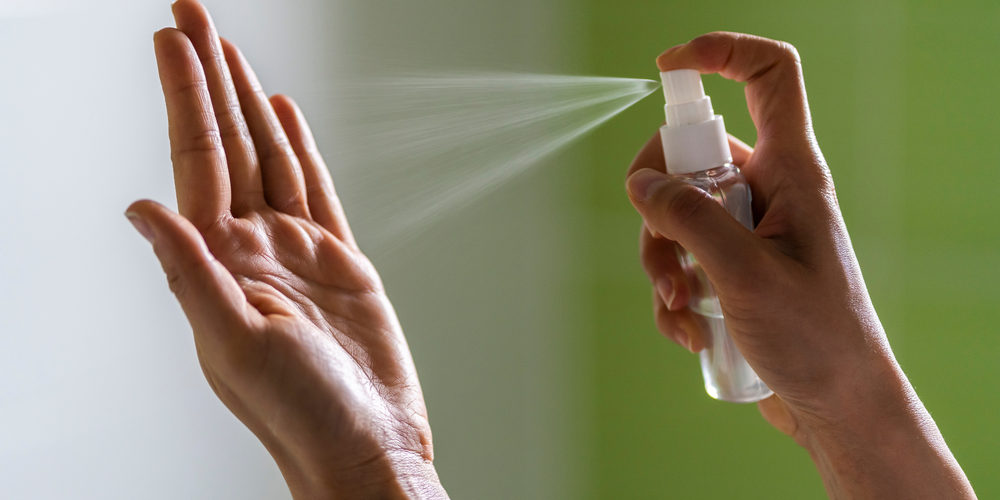How to make a hand sanitizer that works!

Hand sanitizers are hard to find as people have stocked up to combat the Coronavirus. Some have resorted to making their own. While that can be a good idea, keep in mind that most home recipes have not been tested for their germicidal effectiveness. In the midst of a pandemic you may not want to rely on untested formulations.
The World Health Organization (WHO) has their own recipe online with specific proportions of specific ingredients to make an effective hand sanitizer. It was designed for populations that do not have clean water or other medical-grade products in place.
WHO hand sanitizer ingredients:
| Ingredient | Description | ||
|---|---|---|---|
| Ethanol | Germ fighting ingredient. Must be 96% alcohol. The WHO also has a similar formulation using 99% isopropyl alcohol. | ||
| Glycerol | Glycerol acts as a moisturizer. According to Wikipedia, glycerol and glycerine are the same thing. | ||
| Hydrogen Peroxide | Must be 3%. This ingredient is used to inactivate contaminating bacterial spores in the solution and is not an active substance for hand antisepsis. | ||
| Sterile Water | Distilled or boiled cold water. |
The WHO website’s formula is for a 10 L production. The USA National Center for Biotechnology Information ((NCBI) has scaled down the formula to 1 L. The recipe ingredients are measured in millilitres, including fractions of millilitres. For those needing measurements in cups, tablespoons and teaspoons I found a YouTube video by G. Chang that converts the formula into these familiar measurements. This video includes lots of helpul tips and information in the description area including whether to boil your water or not, and what to do if you can’t find 99% isopropyl alcohol. All proceeds from the advertising on his video are going to the WHO COVID-19 Response Fund. Note: the video is not sponsored or endorsed by WHO.
If you prefer something with aloe and essential oils, Rachael Ray had a doctor on her show demonstrating how to make sanitizer. Like the WHO recipe this one also calls for a strong ethanol or isopropyl alcohol. See the video below for instructions as well as a VERY good graphic illustrating the importance of thorough hand washing.
Check out Rachael Ray’s YouTube channel for more of her videos.
I tried to find isopropyl alcohol to make these recipes but stores are sold out. Vodka is another alternative if you can find one strong enough (95% or higher to create an effective sanitizer). I found a few brands online. Disclaimer – I just found these sites by Googling and have no other knowledge about the companies.
Everclear (95%) – found at LiquorLodge.ca
Spirytus Rektyfikowany / Rectified Spirit (Polish Vodka 95%) – found at CraftCellars.ca
Stryker – this brand was mentioned in an article I read but there was no info on where to buy it.
These spirits are very strong and designed to be diluted into cocktails. If you’re planning on drinking some DO NOT INGEST WITHOUT PROPER DILUTION!
Be aware that demand for these vodkas could increase causing shortages. This happened specifically with Spirytus Rektyfikowany in Japan last month when people started using it to combat the Coronavirus after hand sanitizers and rubbing alcohol became scarce in that country.
A word of caution
An article in CNN Health (linked below) mentioned that a hand sanitizer made correctly could be be helpful but if made incorrectly it could be ineffective or harmful to the hands. This article dissuaded people from making their own because they might get the proportions wrong and suggested hand washing as a better option. That said, physician Ford Vox wrote in his CNN opinion piece:
“But we can’t carry a faucet with us, and that’s where the alcohol comes in. Alcohol destabilizes the outer layers of coronaviruses, potentially damaging and breaking them down enough so that they’re less likely to infect you when you later rub your eye . . . it’s possible to make your own hand sanitizer at home, using cheap rubbing alcohol for your active ingredient, although it can be tricky — you might also end up producing a product that could prove too astringent to your skin.”
So assess your own needs and use your best judgement. Measure your ingredients carefully and don’t mix in other ingredients not called for in the recipe. You may wish to do a skin patch test before using the final hand sanitizing product to ensure you don’t get an adverse reaction. Experts always say that hand washing is better than using sanitizer so only rely on it when you can’t wash your hands.
Wishing all my readers the very best during this stressful time. 🍏🇨🇦❤️
References
WHO Recommended Hand Rub Formulations (World Health Organization)
Can’t find hand sanitizer? The World Health Organization has a recipe to make your own (Fox4News)
Everything You Need To Know About Vodka Alcohol Content (AlcoholVolume.com)
Vodka in Short Supply in Japan as Rubbing Alcohol Sells Out (Nippon.com)
Why we can’t find hand sanitizer (CNN Opinion)
Above feature photo by By Gabriel Pahontu / Shutterstock.com.
No Comments